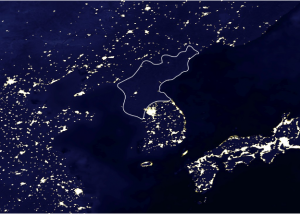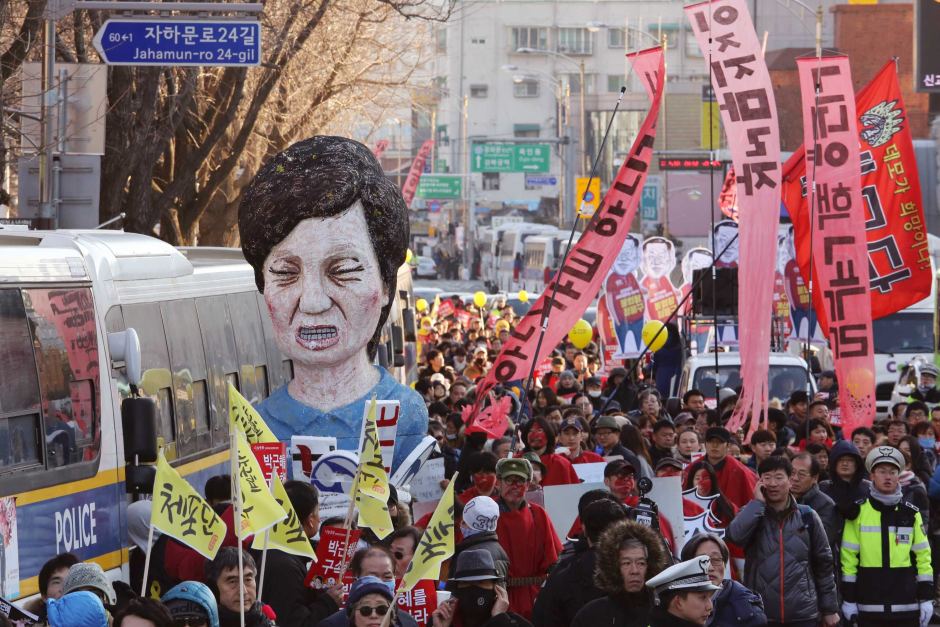
By: Katie Crow
Deep in the northeastern shadows, North Korea lies, literally and figuratively one of the darkest states in the world.
Yet small cracks have been growing throughout the country, allowing outside light to shine in. In September, North Korea allowed for the reopening of the Kaesong complex, an industrial complex where both North and South Koreans work. Dennis Rodman and his basketball team played a controversial game with North Koreans on Kim Jong-Un’s birthday. The Pyongyang marathon is now open to everyday runners, including Americans.
Why are all of these seemingly unrelated events so important? It’s because a totalitarian, oppressive regime can only survive if its citizens do not know they are being oppressed, or that there is anything better out there. Regime types of this nature must close themselves off from the world to keep their citizens ignorant, which is exactly what North Korea has done. However, each additional point of contact they add with outsiders only increases the likelihood of the “information effect.” Not only will the Western World learn more about the machinations of North Korea, but the North Koreans themselves will begin to become aware of their true position in the world order.
Of course, the current situation is still far from inciting revolutions or major improvements overnight. The Kaesong complex is a joint-Korean project. Operations came to a halt last April as the North Korean nuclear test worsened the already tense relationship between the Koreas. North Korea could not keep it closed for long however, as Kaesong serves as a significant source of revenue for North Korea. South Korea has also been pushing for foreign investors, in order to make it more difficult for North Korea to unilaterally shut down the industrial complex in the future. Still, Kaesong may serve more as a political symbol than an actual source of inter-communication between the Koreas. Within the complex, North and South Koreans typically work on different floors and eat in different cafeterias. Any conversations they might have between each other are always short-lived at best, not at all verging on the political. Furthermore, while economic integration has proven to be a strong remedy for isolated regimes, after the shutdown of Kaesong, not many foreign firms are willing to invest in the low-tech industrial complex that lacks internet.
Tourism has been steadily increasing, becoming one of the few relatively established links to the rest of the world. The number of foreign travelers from the Americas, Europe, Australia, and Southeast Asia is estimated to stand around 6,000 in 2013, and the United States surprisingly accounts for roughly a third of that number. However, even despite “basketball diplomacy” and marathons in the most closed-off country in the world, tourism is not the free and open activity that it is in other places. Visas are typically difficult to obtain, and next to impossible if the visitor in question is from South Korea. Moreover, to travel North Korea, visitors must do so via tours. Once they land, tourists are immediately assigned a “tour guide” who keeps a close watch on them wherever they go. These tour guides have but one job: depict the country in the most pleasant and scripted light as possible so that tourists go back to their home country raving about North Korea. As a result, tourists almost never get an opportunity to encounter and interact with the poorer areas of the country, save for quick glimpses through their bus windows.
Despite joint-economic ventures and tourism, all of the cracks in North Korea’s information shield are still miniscule at best. However, the biggest crack is still yet to come. South Korea proposed to hold a long-overdue family reunion between Northern and Southern families who had been split apart during the war. South Korea originally planned to hold the reunion during the Lunar New Year, a meaningful gesture, but this proposal was struck down by North Korea in early January.
Fortunately for the estranged families, North Korea recently changed its mind toward the end of last month. Jong-Un suggested holding the reunion in a tourist resort at Diamond Mountain in southeastern North Korea. Talks have resumed to establish the date, and while there is a cause for some degree of skepticism regarding North Korea’s sincerity and motives, the event could also hold much promise. For the families in question, the reunion would be the first in over three years. While roughly 22,000 Koreans have participated in government reunions, many still remain on a waiting list, reaching into the 70,000s. As these reunions also act as a sort of barometer for Korean relations, sustained family reunions in the future could certainly help mellow the tensions between the two states. The mere fact that North Korea even agreed to talks regarding the reunions is telling, particularly as the U.S.-South Korean joint military exercises are nearing, and North Korea has had a track record of misbehaving and refusing to cooperate during these exercises.
So is there hope for this dark country? North Korea has proven time and time again that aggression and hard stances aren’t always the best strategies for negotiating with it. Perhaps President Obama and Park Geun-hye were right in their acts of firm patience and lack of direct provocation. If North Korea continues to slowly crack open its shell, it will inevitably be forced to open itself and allow for more multilateral cooperation in the future.

